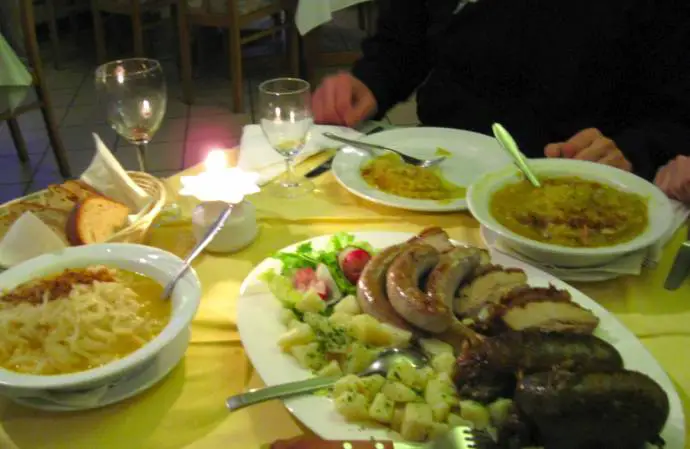In the face of data showing 821 million people in the world suffered hunger or chronic undernourishment in 2017, up from 758 million in 2015, Pivec wrote that "merely being aware that hunger exists is not enough".
"Concrete steps are necessary towards adapting as well as changing practices in food production and environmental protection. Every individual action counts," the minister wrote on the occasion of 16 October, World Food Day.
The Agriculture Ministry said that encouraging short supply chains and local food features among the priorities of the EU's common agricultural policy, while it is also a strategic focus of Slovenia's agricultural policy.
In 2016, 992,000 tonnes of food were produced in Slovenia, while 863,000 tonnes or 47% were imported, show data published by the Statistics Office.
The self-sufficiency rate for fruit was 32%, for vegetables 42%, for wheat 53% and for potatoes 55%. Cereals were planted on 56% of the fields.
An agriculture and food strategy for the period until 2020, adopted in 2011, set an increase in self-sufficiency as a key goal, highlighting a restructuring of farm production and an increase in organic production as key measures.
Moreover, NGOs drew up a strategy called PlanB 4.0 for Slovenia, which adds to this the importance of complementary activities at farms and the diversification of production.
Data shows the shares of farms with organic farming or transitioning to organic and of mixed holdings increasing slowly but persistently in recent years. In 2016, they were the highest so far, with the former accounting for 5% and the latter for 17% of the farms.
Slovenian households used an average of EUR 2,671 for food and non-alcoholic beverages in 2015, while spending an additional EUR 761 in restaurants and bars. Combined this accounted for 18% of their total expenditure.
Although 5.4% of the people in Slovenia suffered severe material deprivation in 2016 and 29% of households had trouble making ends meet, in the same year individuals in Slovenia wasted an average of 0.2 kilos of food a day or 74 kilos in the entire year, of which 35% was still edible.
NGO Ecologists without Borders pointed out today that the amount of food being wasted would be enough to feed all the hungry people in the world. The developed world throws away the same amount of food as sub-Saharan Africa produces, it noted.
More people die of hunger on a daily basis than they do of AIDS, tuberculosis and malaria combined.
The NGO therefore believes the solution is not in expanding the agricultural land and using more resources to increase food production by 70% until 2050 but to reduce the amount of food waste.
Ecologists without Borders also pointed to the environmental aspect of food waste, noting that its carbon footprint had been estimated at 3,300 billion kilogrammes of carbon dioxide, which is more than any country other than China and the US produces a year.
Meanwhile, surveys by the National Institute for Public Health have shown the share of people eating vegetables and breakfast regularly is increasing, while the share of those consuming artificially sweetened beverages is decreasing.
Still, on average one in two adults continues to eat unhealthily, with the issue especially pronounced among the lower classes.







